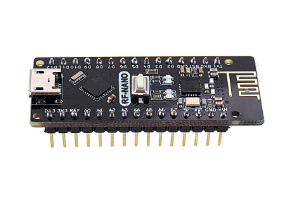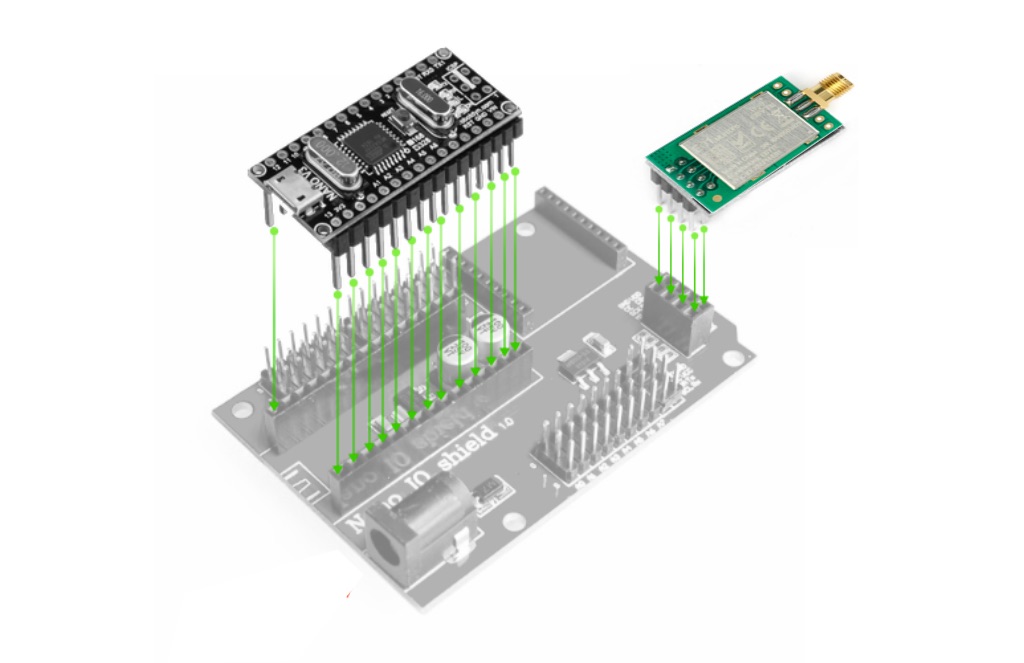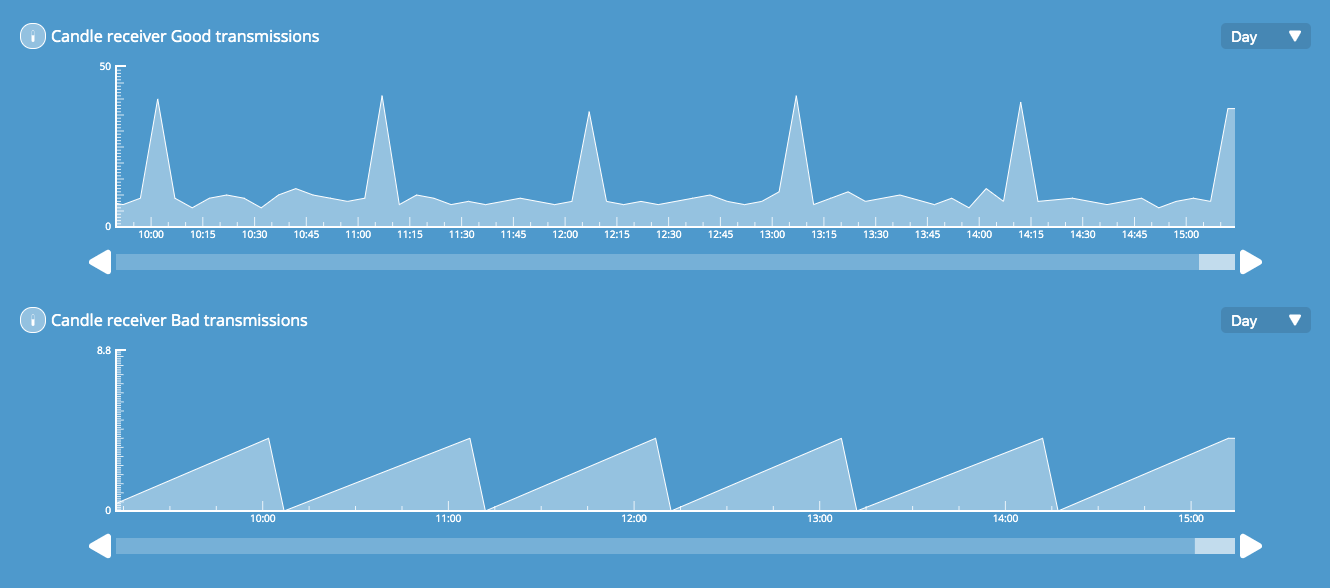How to add more range to your Candle system
If you live in a big house, or are experiencing a lot of wireless interference from your surroundings, then you may be interested in creating a more powerful Candle Receiver.

The default Candle receiver is just a simple RF Nano - the devices which the entire system is based on. It handles and enables encrypted communication in your home network. The Candle devices can act as message repeaters for each other, which allows larger distances to be crossed. However, sometimes you may still have gaps in your network, as the antenna of the RF-Nano is relatively small.
To improve your range, you could create a Candle receiver with a much bigger antenna.
To do so, buy the parts mentioned in the picture above.
- A normal Arduino Nano (328P). If you can afford it, buy an 'official' Arduino Nano. It will help support the development of the great hardware and software they make, on which Candle is built. Chinese clones are a lot cheaper. There we like the RobotDyn modules (pictured), which have a micro USB port.
- A NRF24L01 Shielded PA LNA radio module with a big antenna. We recommend getting a shielded version made by EByte, such as this one.
- A "Nano Wireless Board". Both the Arduino Nano and the radio module plug into this. You can find these cheaply on Aliexpress, for example.

The Arduino has to be plugged in with the USB port facing to the outside of the board. The Radio module should be plugged in so that it sticks out of the board. Don't forget to screw on the antenna.
Once created, you can upload code to it via the Candle Manager as usual. The only difference is that you have to uncheck "RF-Nano" when setting the preferences for your device.

New transmission quality feature
The Candle receiver's software has also received a new optional feature. If you want you can enable the receiver to send data on any transmission issues it may experience. It will send a success and failure count every few minutes. These might indicate a problem in your network, and could help you solve it.
Of course you should discuss enabling such a feature with other people in your home, as the logs might in rare cases reveal how devices are used. For example, if they are temporarily turned off.
Share this article
These are privacy friendly sharing buttons; no code from these companies has been loaded into this page